Joseph Brown
1909-1985
Joseph Brown was born in Philadelphia, Pennsylvania. He studied at Temple University from 1927 to 1931 but did not graduate. Brown began a career as a professional boxer in 1929 but abandoned it in 1931 to become a studio assistant to his sculpting mentor, Dr. R. Tait McKenzie, at Princeton University. After marrying Gwyneth Noreen King, Brown began teaching and sculpting at Princeton, where he spent the rest of his academic career.
Boxing coach at Princeton University (since 1938). He later became a resident fellow in sculpture. Brown began to think about play. Brown critiqued play equipment designed by Princeton’s architecture graduate students. Challengnd by the students, and somewhat embarrassed that he had no real knowledge of playground design other than his own experiences as a kid, Brown began to come up with his own devices.
Mr Brown improvised, on the spot, with some scrape of steel tap laying around from some repair work being done at the school. He put some pieces of metal banding together to form a small model of the spider-like device which he later came to call the Jiggle Rail. It was a intriguing device that he couldn’t quit thinking about, and so later he built a full size Jiggle Rail and got permission to set it up in a school playground.
Architects and landscape architects were quickly aware of his experiments. Robert Nichols, one of the founders of Playground Associates, wrote to him for help when they formed their company that would soon produce the Saddle Slide.
He believed deeply that play was a preparation for adulthood, a popular view since the early part of the twentieth century. Brown wanted his pieces to demonstrate cause and effect as part of normal behavior, with the aim of forming cooperative future citizens.
Brown was able to build several prototypes, but none is known to have gone into full-scale production. By 1957, full-size prototypes of Brown’s work were in place in Philadelphia, London, Tokyo, and some New Jersey towns.
sources
Susan G. Salomon: American Playgrounds. Revitalizing Community Space, University Press of New England, 2005, pp.36-41.
images
– Joseph Brown Papers, Special Collections, University of Knoxville, Tennessee
– Ledermann A. und Trachsel A., Spielplatz und Gemeinschaftszentrum, 1959.
update: 9.2.2012, Sept. 14, 2013
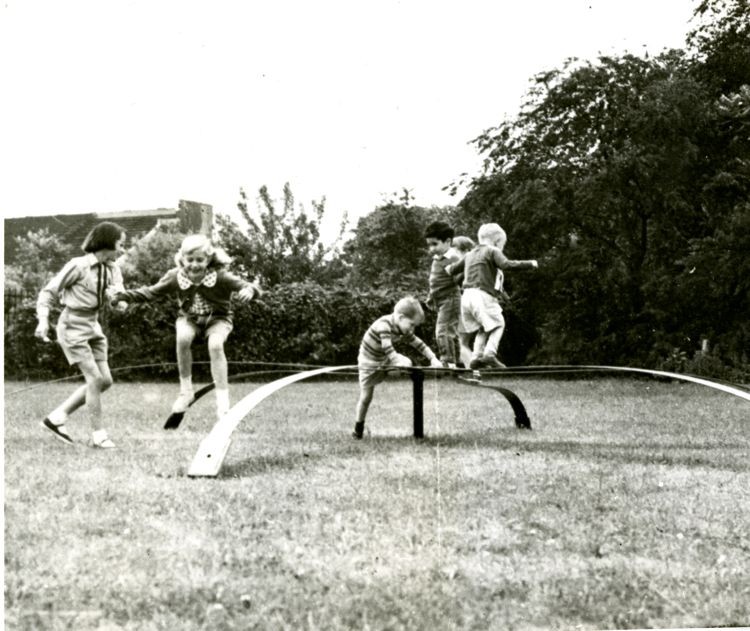
Joseph Brown, Jiggle Rail, ca. 1955 (prototype)

Joseph Brown, Jiggle Structure, ca. 1955
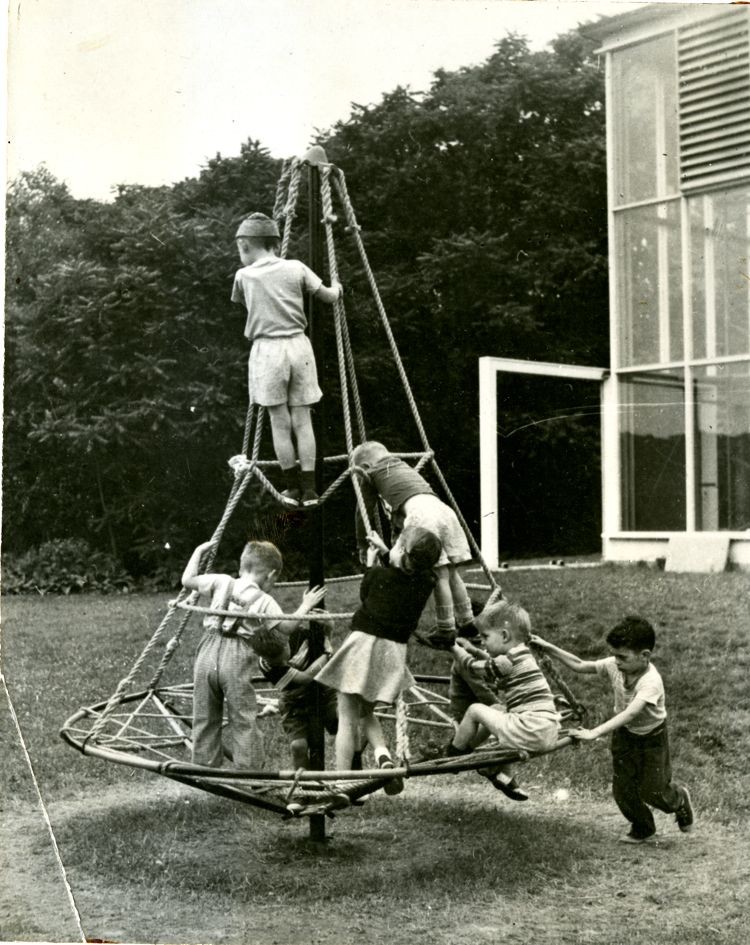
Joseph Brown, Swing Ring, ca. 1955 (prototype)
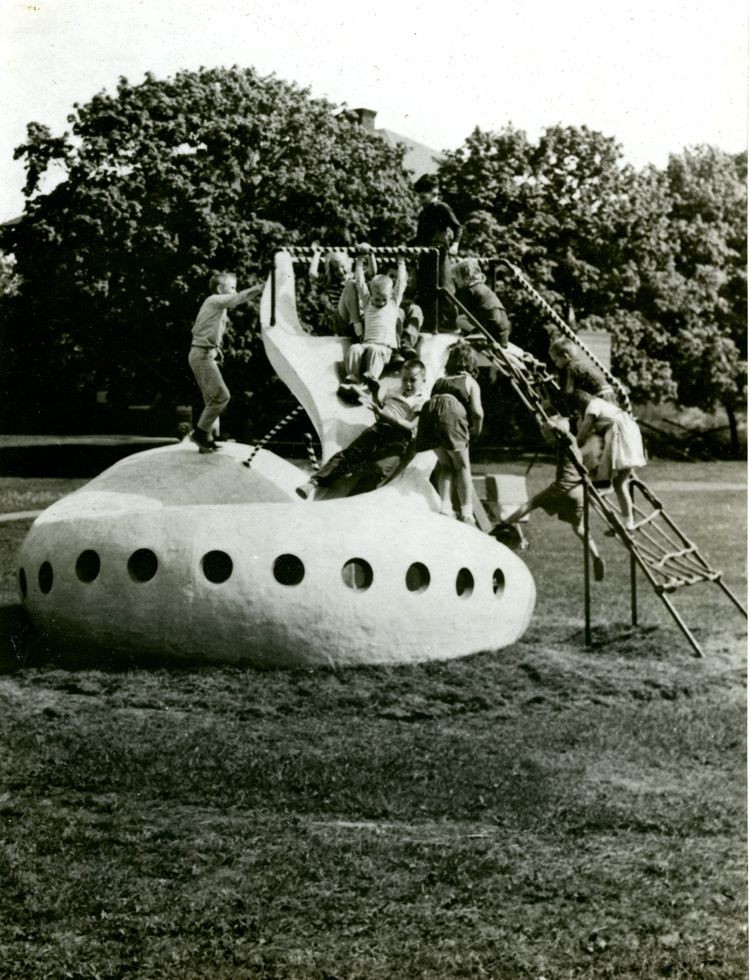
Joseph Brown, Whale, ca. 1957

Joseph Brown: Jiggle Structure, Central Park New York, ca. 1961
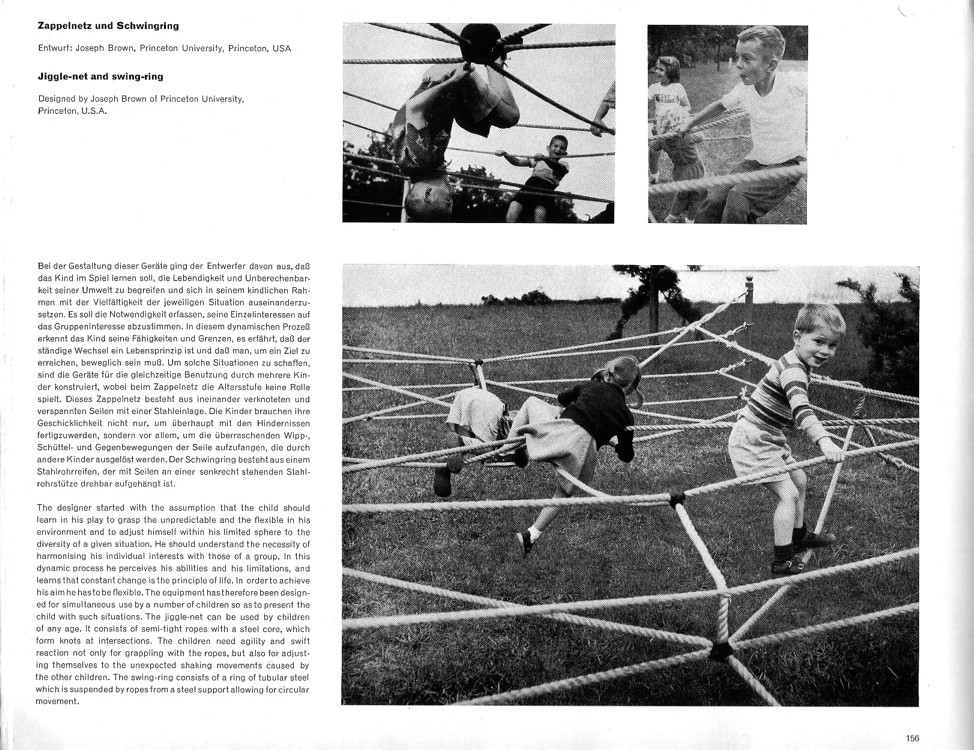
Joseph Brown: Jiggle-Net, in: Ledermann und Trachsel
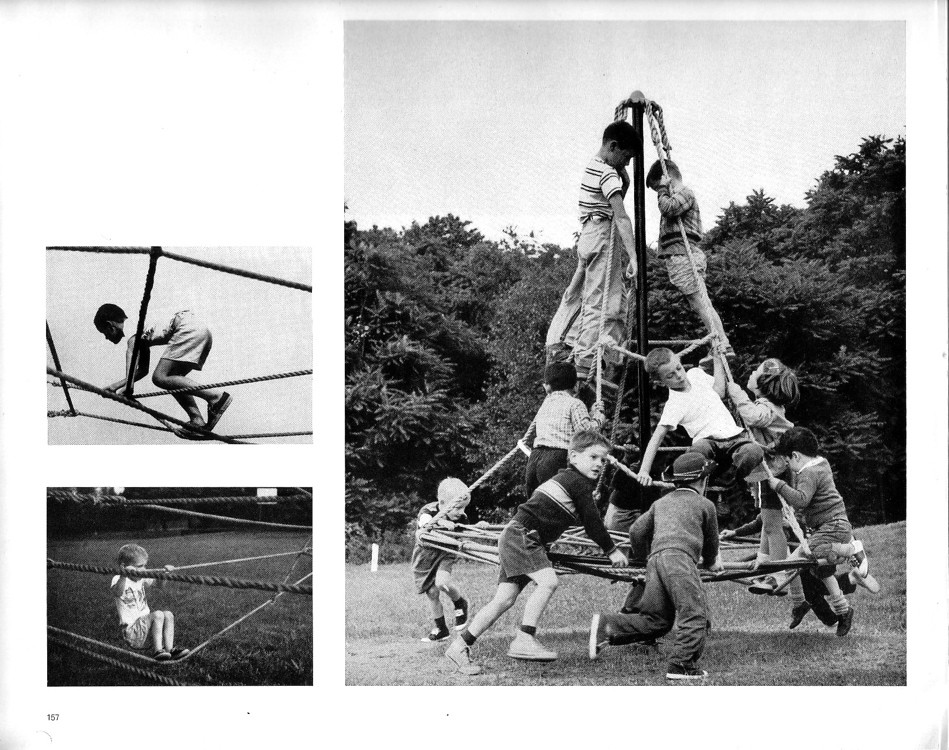
Joseph Brown: Swing Ring, in: Ledermann und Trachsel
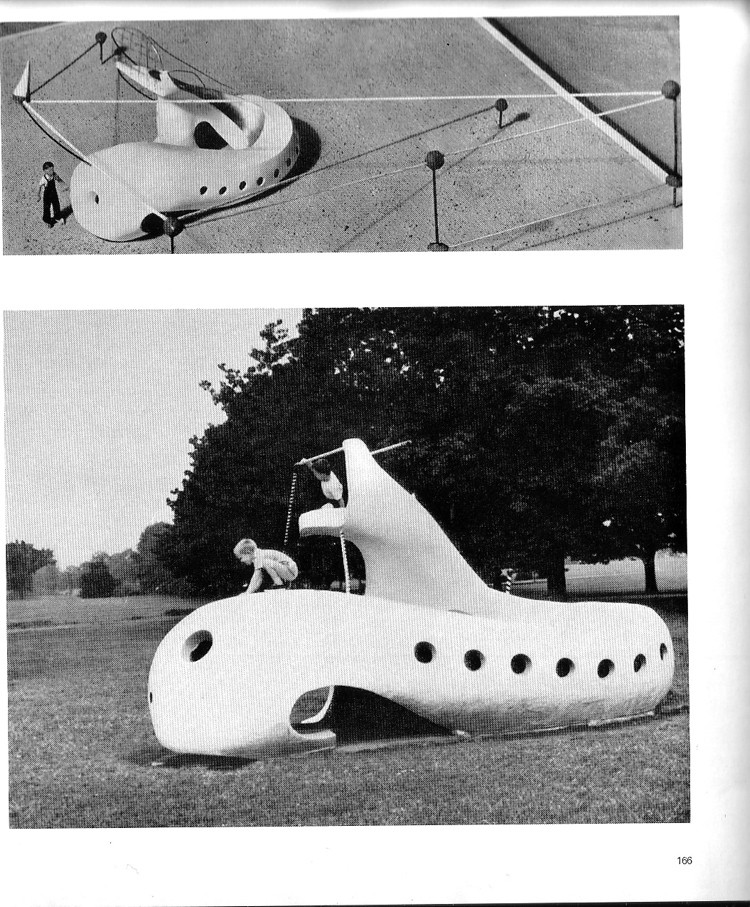
Whale, and model of Whale Yard, in: Ledermann und Trachsel